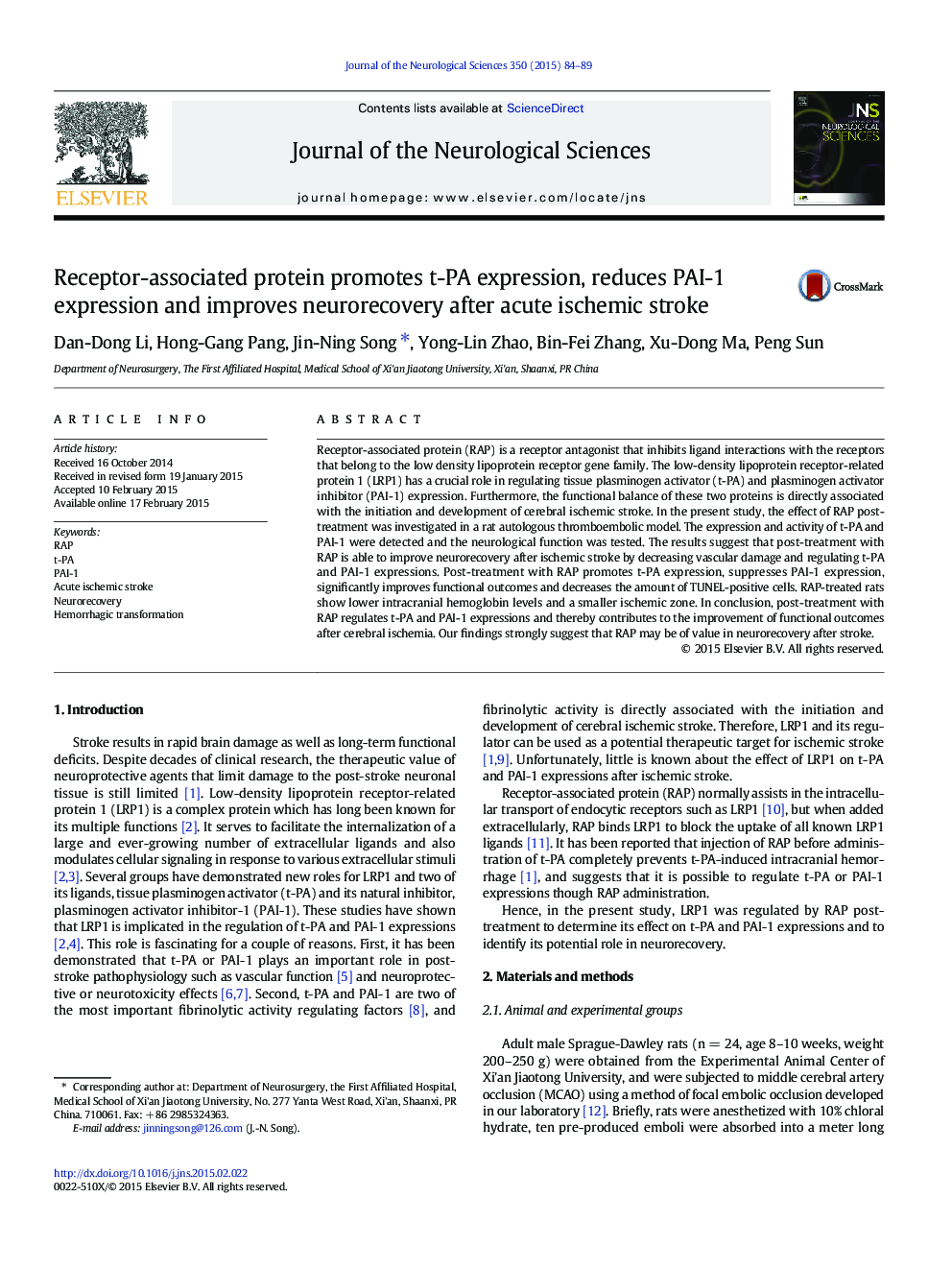| Article ID | Journal | Published Year | Pages | File Type |
|---|---|---|---|---|
| 8276361 | Journal of the Neurological Sciences | 2015 | 6 Pages |
Abstract
Receptor-associated protein (RAP) is a receptor antagonist that inhibits ligand interactions with the receptors that belong to the low density lipoprotein receptor gene family. The low-density lipoprotein receptor-related protein 1 (LRP1) has a crucial role in regulating tissue plasminogen activator (t-PA) and plasminogen activator inhibitor (PAI-1) expression. Furthermore, the functional balance of these two proteins is directly associated with the initiation and development of cerebral ischemic stroke. In the present study, the effect of RAP post-treatment was investigated in a rat autologous thromboembolic model. The expression and activity of t-PA and PAI-1 were detected and the neurological function was tested. The results suggest that post-treatment with RAP is able to improve neurorecovery after ischemic stroke by decreasing vascular damage and regulating t-PA and PAI-1 expressions. Post-treatment with RAP promotes t-PA expression, suppresses PAI-1 expression, significantly improves functional outcomes and decreases the amount of TUNEL-positive cells. RAP-treated rats show lower intracranial hemoglobin levels and a smaller ischemic zone. In conclusion, post-treatment with RAP regulates t-PA and PAI-1 expressions and thereby contributes to the improvement of functional outcomes after cerebral ischemia. Our findings strongly suggest that RAP may be of value in neurorecovery after stroke.
Related Topics
Life Sciences
Biochemistry, Genetics and Molecular Biology
Ageing
Authors
Dan-Dong Li, Hong-Gang Pang, Jin-Ning Song, Yong-Lin Zhao, Bin-Fei Zhang, Xu-Dong Ma, Peng Sun,
